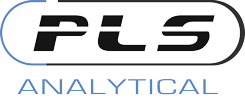CLEANING VERIFICATION
Cleaning verification is a critical aspect of the manufacturing process that involves ensuring that equipment and surfaces used during the development process of drugs are free of residues from previous batches. This process helps to prevent cross-contamination, which can compromise the efficacy and safety of pharmaceutical products.
Cleaning verification typically includes the following steps:
- Selection of Analytical Method: This is where experts need to select an appropriate analytical method for detecting and quantifying residual contaminants.
- Sampling: The collection of samples from the equipment and surfaces that need to be verified for cleanliness.
- Sample Preparation: The collected samples are prepared for analysis which involves removing any interfering substances and preparing the sample in a form suitable for the chosen method.
- Analysis: Once the prepared samples are analyzed, the results are compared against established criteria to determine if all the equipment and surfaces are clean.
- Documentation: A document that includes the method used, sampling details, analytical results, and other details is prepared as evidence.
Every manufacturing lab requires to perform cleaning verification in accordance with the established guidelines by the USP parameters (in reference to the USP General Chapter <1226> “Verification of Compendial Procedures”).


PLS Analytical laboratories are qualified with an experienced team of scientists and cutting-edge technology for each analytical method
We are fully committed to bringing quality drug products that have proven data to support their efficiency and safety. We follow the USP guidelines on specific requirements for cleaning verification in various pharmacopeial monographs, including limits for specific contaminants and guidelines for analytical methods.
Cleaning Verification By TOC Analyzer
The Total Organic Carbon (TOC) analysis, performed using a TOC analyzer, is a commonly used method for cleaning verification. The method development and verification process for cleaning verification by TOC Analyzer typically occurs in the following steps:
- Method Development: The method development for cleaning verification using a TOC analyzer involves sample selection, extraction solvent followed by extraction procedure, and method parameters.
- Method Verification: Once the method has been developed, it needs to be verified to ensure its suitability and robustness.
With a cleaning verification method using a TOC analyzer, pharmaceutical companies can ensure the effectiveness of their cleaning procedures, mitigate the risk of cross-contamination, and maintain product quality and safety.
Significance Of Cleaning Verification
It is an ethical commitment of any pharmaceutical company to ensure the safety and efficacy of drug products before launching them on the market. Some of the benefits of cleaning verification include the following:
- Cleaning verification helps to prevent cross-contamination, which can compromise the safety and efficacy of drug products.
- Regulatory authorities involving the FDA require pharmaceutical companies to verify the cleanliness of their equipment and surfaces.
- Cleanliness can ensure that equipment and surfaces are ready for use, reducing downtime and improving efficiency.
- Cleaning verification is a way of quality control that minimizes the risk of contamination.

